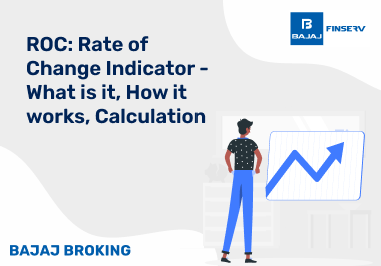The term "sinking fund" might make you think of something sad, like money going down a black hole. But in reality, it's the other way around. It's money that is being carefully hidden away, little by little, so that a business doesn't fail when a big bill or payment is due. Think of it less as “sinking” and more as “setting aside before the tide rises.”
For businesses in India, it’s a straightforward yet powerful tool. Instead of scrambling at the last minute to pay back a massive loan or redeem bonds, the company builds a cushion over time. Investors like that predictability. Creditors like it too. And frankly, the company itself avoids a financial heart attack.
What is a Sinking Fund?
At its core, a sinking fund is a savings plan with a purpose. Not vague, not “we’ll see later”, but earmarked. Imagine you know in five years you’ll need to buy expensive machinery or pay back a bond issue. Rather than draining your cash reserves in one painful swoop, you spread the burden over smaller, scheduled contributions.
That’s the heart of it—proactive financial management. You’re saying, “We know this day is coming, so let’s prepare now.” It might sound boring, but in the world of corporate finance, 'boring' is often another word for 'reliable'.
How Do Sinking Funds Work?
The mechanics aren’t complicated. A company sets a target—say ₹100 crore due in five years—and then maps out how much to save each year (₹20 crore annually, in this case). These contributions don’t just sit idle in a current account; they’re usually parked in safe, interest-bearing instruments. That way, the money grows a little along the way but stays accessible when needed.
It’s a bit like parents saving for their child’s higher education. You don’t wait until the admission letter arrives to pull the entire fee out of thin air. You save gradually, in a disciplined manner, so the big day feels manageable.
Examples of Sinking Funds
Let's give it some numbers. For example, a company might issue bonds worth ₹200 crore that will mature in five years. Without a plan, it would have to scramble to get the whole ₹200 crore ready for maturity. But with a sinking fund, it sets aside ₹40 crore annually.
By year five, the pot is full, the bondholders get paid, and the company avoids last-minute panic. Investors also notice—it signals reliability, which matters more than fancy projections.
Additionally Read:
Types of Sinking Funds
Companies don’t all save for the same reasons, so sinking funds take different shapes:
Callable Bond Sinking Fund
Designed for companies that may want to repurchase their bonds before maturity. It’s partly strategy—reducing long-term interest costs—and partly risk management.
Specific Purpose Sinking Fund
Set aside for a future cost that is very clear and cannot be changed. It could be new equipment, an expansion of the plant, or any other investment that requires a lot of money and has a predictable timeline.
Regular Payment Sinking Fund
When a business knows it has to pay something on a regular basis, like interest or trustee fees. The fund doesn't have to take money out of operating cash flow every time; it can handle the hit smoothly.
Purchase Back Sinking Fund
Allows for the purchase of bonds back from the open market. The company can pay off its debt at a lower price if prices go down.
Additionally Read: Why Is a Consolidated Account Statement Valuable?
Features of Sinking Funds
There are a few defining traits that make sinking funds useful:
Planned contributions – The discipline of regular deposits reduces the risk of nasty surprises.
Financial security – Companies avoid the stress of lump-sum payments.
Low-risk investments – The fund isn’t a gamble; it’s usually parked in safe avenues.
Transparency – Because it’s tracked and documented, stakeholders see the effort, which builds trust.
In short, it’s about discipline plus visibility. Those two things are very helpful in finance.
Advantages of Sinking Funds
Advance Liability Payment
Future dues stop feeling overwhelming because they’re chipped away at beforehand.
Timely Debt Clearance
Scheduled contributions mean the company won't be short on cash when it's time to pay back.
Improved Investor Relations
Bondholders feel better when they see that the company is serious about being financially responsible. This can help with future fundraising efforts.
Disadvantages of Sinking Funds
Limited Flexibility
Once you put money into this, you can't use it for everyday business needs. That can sting during unplanned problems.
Potential Shortfall
If the company has problems and doesn't get contributions, the fund may not add up as planned, which defeats the purpose.
So, sinking funds help keep things stable, but they don't fix everything.
How To Calculate The Sinking Fund?
There’s a formula, and yes—it looks intimidating at first glance:
PMT = FV × [ i / ((1 + i)ⁿ – 1) ]
Where:
PMT = periodic contribution
FV = the final amount needed
i = interest rate per period
n = number of periods
In simple terms, the formula tells you how much you should save each month, taking into account both time and interest growth. If you didn't have it, you'd be guessing, and guessing doesn't work well in finance.
Conclusion
A sinking fund may not sound exciting, but it has a lot of power. It lets businesses meet big obligations without messing up their operations. It gives people confidence, both inside the company and among investors who are watching from the outside.
At the end of the day, it’s less about clever math and more about discipline. Small, regular steps toward an unavoidable financial milestone. In other words: preparing today so tomorrow doesn’t feel like a cliff.














